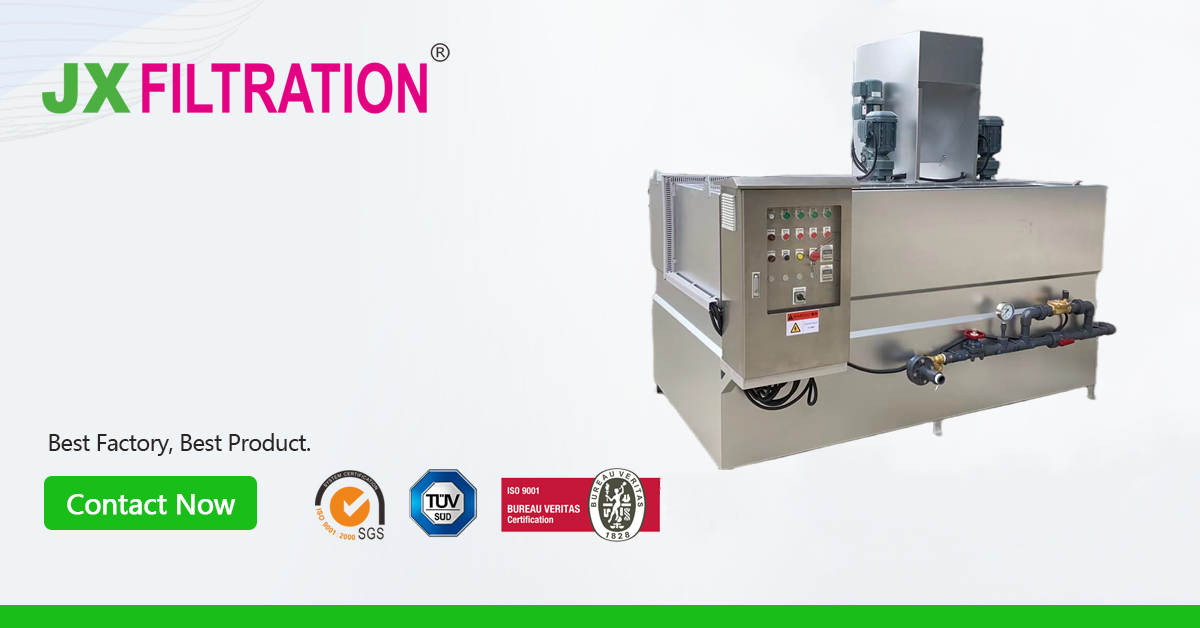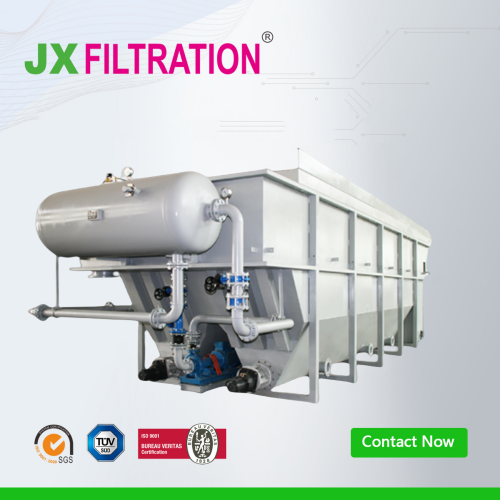Principles and Applications of DAF
Dissolved Air Flotation (DAF) is a common wastewater treatment equipment widely used in various industrial and municipal wastewater treatment plants. It operates by dissolving gas in water, typically air, and then releasing the gas to form tiny bubbles. These bubbles attach to pollutants, causing them to float for subsequent separation and removal. This article will provide a detailed overview of the working principles, structure, and application areas of Dissolved Air Flotation.

I. Working Principles of Dissolved Air Flotation
- Dissolution Phase: Firstly, gas, usually air, is dissolved in water, achieved by exposing water to the gas or using specialized dissolved gas devices. The dissolved gas forms tiny bubbles.
- Bubble Generation: The dissolved gas is released into the water through devices such as bubble generators or nozzles. These bubbles are extremely small, typically ranging from 20 micrometers to 100 micrometers, allowing them to generate numerous tiny bubbles in the water.
- Adsorption of Pollutants: During the ascent of the tiny bubbles in the water, they collide with suspended pollutant particles. Due to the adhesive forces on the bubble surface, pollutant particles attach to the bubble surface.
- Bubble Ascension: Pollutant-laden bubbles ascend to the water surface. This process, known as ascension, separates pollutants from the water.
- Pollutant Separation: Once pollutant particles and bubbles reach the water surface, they form a floating sludge or foam layer. This layer can be easily scraped off or extracted, effectively separating and removing pollutants from the water.
II. Construction of Dissolved Air Flotation
- Dissolved Gas Device: One of the key components of Dissolved Air Flotation is the gas dissolution device, responsible for dissolving gas in water, typically achieved through pressure or injecting gas into water.
- Bubble Generation Device: The bubble generation device releases dissolved gas in water as tiny bubbles, commonly using bubble generators, nozzles, or diffusers.
- Pollutant Separation Zone: In the pollutant separation zone, pollutants in water come into contact with and adhere to tiny bubbles. This area usually incorporates proper mixing or agitation systems to ensure effective contact.
- Ascension Zone: The ascension zone is where pollutants and bubbles ascend together. Here, pollutant particles adhere to the bubble surface and are brought to the water surface.
- Pollutant Collection and Removal System: Once pollutants and bubbles reach the water surface, they concentrate in a floating sludge or foam layer. This pollutant collection layer can be periodically removed and eliminated using scrapers, agitators, or other mechanical devices.
III. Application Areas
- Industrial Wastewater Treatment: Dissolved Air Flotation is effective in removing various pollutants such as suspended solids, oil, and heavy metal ions from industrial wastewater, ensuring compliance with discharge standards or meeting water quality requirements for reuse.
- Municipal Wastewater Treatment: Municipal wastewater contains a variety of organic and inorganic substances, as well as suspended solids. DAF is used in municipal wastewater treatment plants to remove a significant portion of solid particles and fats during the pretreatment stage, alleviating the burden on subsequent treatment processes.
- Food and Beverage Industry: Wastewater generated in the production processes of the food and beverage industry often contains a high concentration of organic waste and suspended solids. DAF efficiently removes these pollutants, ensuring that the discharged water meets regulatory requirements.
- Mining and Metallurgy: In the mining and metallurgical industries, Dissolved Air Flotation is widely used in the treatment of wastewater containing metal ions, ore particles, and other contaminants, facilitating the recovery of valuable metals or reducing environmental pollution.
In summary, Dissolved Air Flotation is an efficient wastewater treatment equipment with simple yet effective principles. It plays a crucial role in various industrial and urban applications, contributing to water quality improvement, environmental pollution reduction, and the achievement of sustainable water resource management.
Any Requirements, Contact Us Now!
Kris
Email/Teams: kris@filtrationchina.com
Mobile/Whatsapp/Wechat: +86 18980776200


